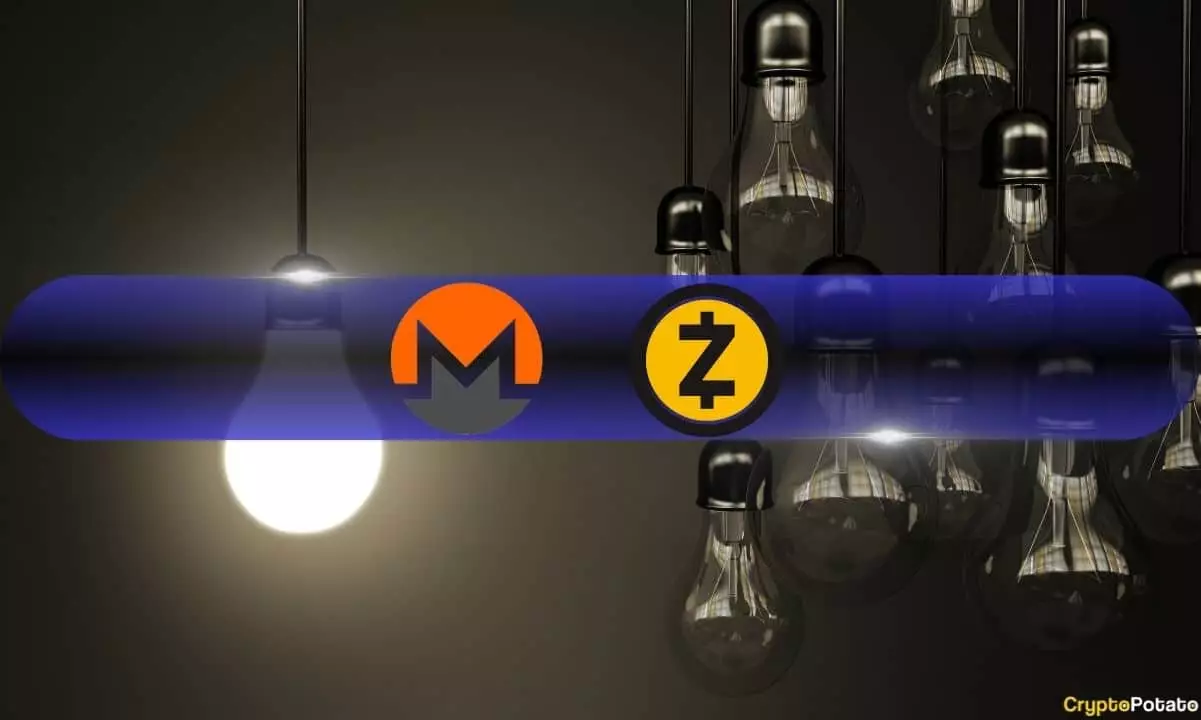In a recent report by Kaiko, it has been revealed that the liquidity for privacy tokens has reached an all-time low of just $5 million. This precipitous drop in liquidity can be attributed to the delisting of several trading pairs by OKX due to their failure to meet certain criteria. The regulatory pressures facing privacy tokens, such as Monero (XMR) and Zcash (ZEC), have pushed them to the brink of being delisted from major platforms like Binance. With low liquidity posing significant challenges for these tokens, their future in the market seems uncertain.
Market Turmoil and Notable Developments
Despite the market turmoil experienced in recent times, the end of 2023 saw a few notable developments in the cryptocurrency landscape. During a sell-off last week, the trade volume on Korean exchanges reached a multi-year high, indicating sustained interest in cryptocurrencies despite the market challenges. Bitcoin’s market share also rose to 32%, a level not seen since 2020. This increase in market share came alongside a general decrease in altcoin trading volumes. The shifting dynamics of cryptocurrency trading, especially in the face of increasing regulatory efforts in South Korea, suggest that market participants are adapting to the changing landscape.
In addition to the rise of Bitcoin, the market for SOL (Solana) has shown positive trends. There were instances where SOL’s trading volume exceeded the combined volume of Bitcoin and Ether on several exchanges, a rare occurrence in the cryptocurrency world. This surge in SOL’s market share, particularly against Ether, signals a significant shift in the altcoin domain and hints at the growing prominence of SOL as a viable investment option.
While some cryptocurrencies have experienced positive developments, PYUSD has faced a slow start in the crypto trading sphere. Despite being listed on several centralized exchanges, its trading volume remains significantly low compared to established stablecoins like Tether (USDT). PYUSD’s struggle to gain traction highlights the intense competition in the stablecoin market and the challenges faced by new entrants. In an industry driven by liquidity, PYUSD’s lackluster performance raises questions about its long-term viability and ability to garner market demand.
January 10 stands as a pivotal moment in the cryptocurrency world as the SEC is set to decide on Ark’s spot Bitcoin ETF. The outcome of this decision is highly anticipated, and regardless of the result, the market is bracing for more volatility. This anticipation comes after Bitcoin ended a week of turmoil on a positive note, following a price crash that led to significant liquidations. While an analyst’s speculation about the spot Bitcoin ETF decision was initially thought to be the cause of the crash, further reports indicate underlying issues within the market.
Before the crash, several market indicators, including price slippage rates, signaled trouble. Slippage rates on major exchanges like Binance, Coinbase, and Kraken rose above 0.02% on January 2, indicating diminishing liquidity despite Bitcoin’s price hovering around $45,000. Additionally, the futures market revealed signs of an overheated market, with Bitcoin perpetual futures open interest in USD reaching a peak of $10 billion in early December. This surge in open interest suggests increased market leverage, which can further exacerbate volatility. High volumes in options markets, particularly Bitcoin options on Deribit, also indicate traders’ anticipation of volatility surrounding the spot ETF decision.
A Challenging Road Ahead
The liquidity challenges faced by privacy tokens, the shifting dynamics in cryptocurrency trading, and the struggles of new entrants like PYUSD all point to a challenging road ahead in the crypto market. With regulatory pressures intensifying and volatility remaining a prevalent concern, market participants must navigate these obstacles to secure their positions in the industry. As the market continues to evolve, adaptability and resilience will be key characteristics for success. Only time will reveal how the cryptocurrency landscape unfolds and whether liquidity for privacy tokens can rebound from its current rock bottom state.














